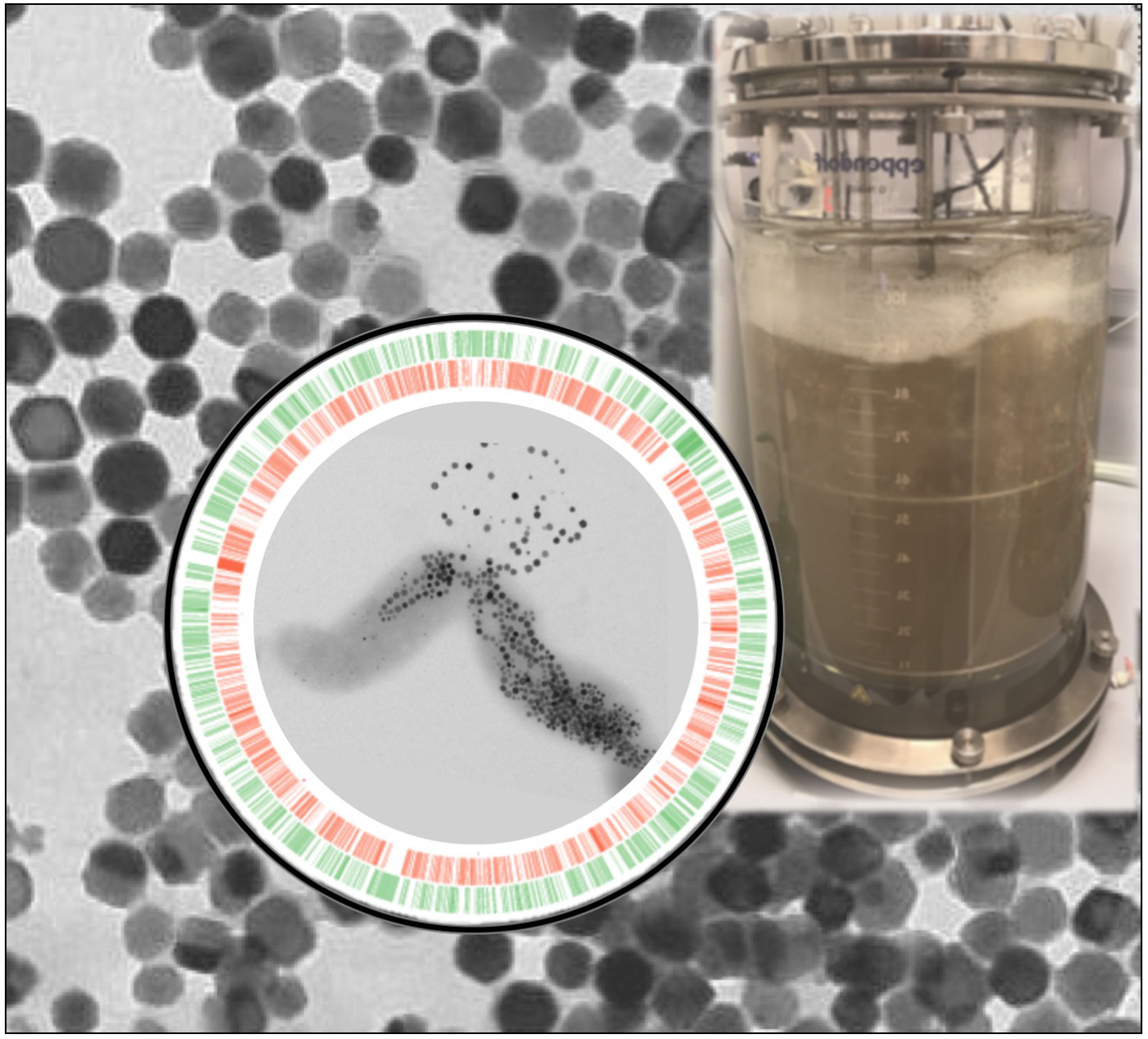BMBF-Project MagBiofab

© project PIs
Nano-magnets from the microbial biofactory
Magnetotactic bacteria form unique intracellular organelles, so-called magnetosomes, which consist of membrane-enveloped crystals of a magnetic iron oxide.
In the first place, magnetosomes serve as magnetic field sensor for the bacterial cell. However, from the view of materials science, they constitute also magnetic nanoparticles with unusual, genetically encoded material properties. Due to the precisely regulated biosynthesis process, they exhibit strong magnetization, high crystallinity as well as uniform shape and size which renders them superior to technically produced magnetic particles in many biotechnological and biomedical applications.
For instance, isolated magnetosomes are highly interesting as contrast agent in magnetic imaging technologies, or as a means for local heat generation in magnetic hyperthermia-applications. One could also envision the use of magnetosomes as magnetic "theranostics" for the combined diagnosis and therapy of tumors. The magnetosome lipid envelope can be genetically decorated with special biomolecules such as fluorophores, antibodies, enzymes or envelope-proteins, thereby generating novel nanomagnetic materials with diverse functionalities.
So far, (bio)technological application of magentosomes has been impeded significantly by the cumbersome growth of the fastidious and sensitive magnetotactic bacteria, as well as by low yields from magnetosome isolation processes.
The project MagBiofab sets out to establish fundamental principles for a sustainable industrial bioproduction and application of bacterial magnetic nanoparticles. To this end, we plan to transform the magnetotactic bacterium Magnetospirillum gryphiswaldense - Magnetospirillum has been Microbe of the year 2019 - into a microbial cell factory for the production of magnetic nanomaterials. By elimination of dispensable regions from the genome of M. gryphiswaldense and insertion of specific gene cassettes and regulatory genetic elements we expect more robust and, regarding magnetosome number per cell, more profitable strain variants. Concomitantly, new methods for fermenter-scale growth as well as high-yield magnetosome isolation and purification will be tested and established.
Principal Investigators: PD Dr. René Uebe, Prof. Dr. Dirk Schüler
